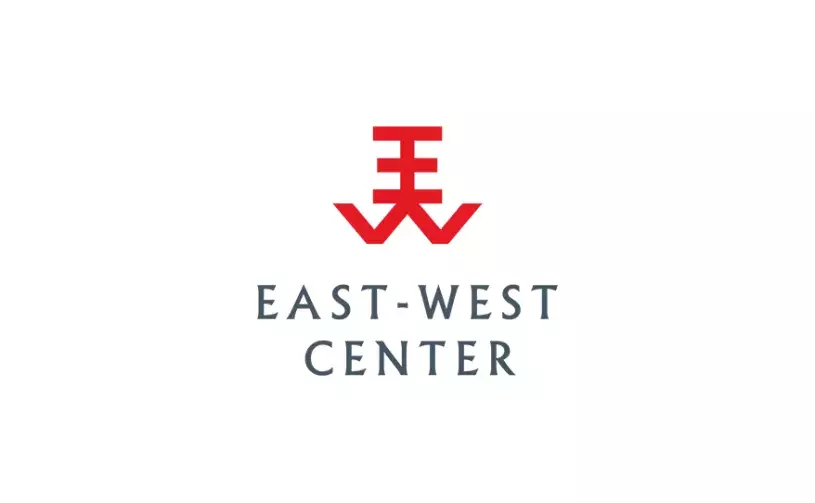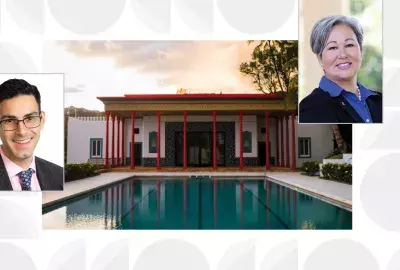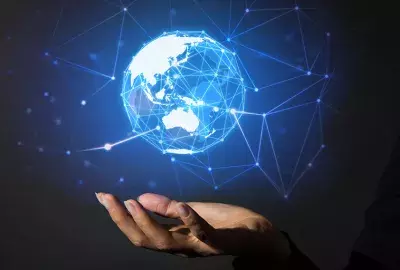Error message

By Allen L. Clark
HONOLULU (April 6, 2018)—Deep-sea exploration projects have identified valuable mineral deposits across the Pacific—both in the open ocean under international jurisdiction and in the territorial waters of several Pacific Island nations. Revenues from seabed mining of gold, silver, copper, nickel, and cobalt could potentially bring massive benefits to Pacific Island governments and their people through tax revenues and royalties. Yet as of today, no commercially viable Pacific seabed-mining project has actually started production.
Three types of deep-sea formation have been identified in the Pacific with high levels of valuable minerals—cobalt-manganese crusts, mineral-bearing manganese nodules scattered along the ocean floor, and mineral-rich sulfide deposits surrounding hydrothermal vents. Many of these occur at massive depths—up to 3.7 miles under the surface.
According to the World Bank (2017), Kiribati, the Marshall Islands, the Federated States of Micronesia, Niue, Palau, Samoa, and Tuvalu all have cobalt-manganese crusts within their territorial waters. Manganese nodules have been discovered near the Cook Islands, Kiribati, Niue, and Tuvalu, and mineral-rich sulfide deposits are associated with hydrothermal vents near Fiji, Papua New Guinea, the Solomon Islands, Tonga, and Vanuatu. Interest in exploiting these sites has increased in recent years as land-based mineral resources become depleted and as advances in technology promise to make deep underwater mining both technically feasible and viable in economic terms.
The promises and pitfalls of mining these deposits are still unclear, however. On the positive side, many seabed deposits in the Pacific have a higher average mineral content than the land-based deposits being mined today. The World Bank estimates that net government revenues from one seabed-mining operation could average about $42 million a year.
On the negative side, the massive robotic equipment digging and scraping in the seabed would inevitably damage poorly understood ecosystems in ways that are impossible to predict. In addition, there is very limited understanding of the links between the seabed environment and pelagic and coastal ecosystems—with their fish populations, tourism sites, and economic, social, and cultural importance for local communities. Plumes of water pumped back into the sea as part of mining operations could damage the seabed as well as environments higher in the water column. And noise and lights from equipment on the seabed and vessels at the surface could have a harmful effect on marine life.
The legal jurisdiction for seabed mining is complicated. In 1982, the United Nations Convention on the Law of the Sea set out the international judicial system that determines ownership rights to marine resources. Each sovereign nation “owns” the resources in and under the ocean in an exclusive economic zone that stretches up to 200 nautical miles from its shoreline. Yet along with the right to mine seabed minerals under their territorial waters comes the responsibility, specified in international law, to protect and preserve the marine environment.
The International Seabed Authority, with headquarters in Jamaica, is the implementing agency responsible for controlling and administering resources beyond national jurisdictions. In 2001, the Authority began awarding 15-year contracts that give mining companies the exclusive right to explore large sections of the seabed. In 2017, the Authority released draft regulations that address environmental impacts. As of early 2018, the authority had issued 27 exploration contracts, but no licenses to begin mining operations.
Several island nations have also entered into exploration contracts with international companies to assess deep-sea mineral deposits in their territorial waters. These include the Cook Islands, Papua New Guinea, Fiji, Tonga, the Solomon Islands, and Vanuatu.
So far, Papua New Guinea is the only country in the region that has given a company permission to start ocean-floor mining. In 2009, the government granted an environmental permit to Nautilus Minerals, a Canadian company with large shareholders in Russia and Oman, and in 2011, the government granted Nautilus a lease to begin mining copper and gold from a seabed vent in the Bismarck Sea.
The project has met with fierce public outcry, however. In late 2017, coastal communities in Papua New Guinea began legal proceedings against the government, seeking information on the approval process—which they claim lacked transparency—as well as a thorough assessment of the likely environmental, economic, social, and cultural impacts.
The outpouring of public sentiment—both in Papua New Guinea and in other countries of the region—has jeopardized the massive funding needed to start operations, and at present, the project is on hold. Bank- Track (2017), an international nongovernmental organization that tracks the global banking industry, warned banks and other investors to steer clear of the project: “Experience with other mining projects shows us that local opposition often results in legal and public-relations disasters for companies and their financiers.” Several senior executives at Nautilus have resigned.
One recent twist in the environmental debate concerns surprising new discoveries of plant and animal communities in the deep ocean. About 300 species have been identified living around thermal vents under conditions that would normally be considered inimical to life.
Several of these plant and animal species have already proven to be valuable resources for the pharmaceutical industry, and interest is growing in their potential economic value. Today, deep-sea dwellers are providing the basis for new cancer-fighting therapies, antiviral drugs, and pain medications.
Companies in the United States, Germany, and Japan have applied for and received the bulk of patents for useful products derived from marine species (Vierros et al. 2016), and concern has mounted that countries where the species are discovered may not receive their fair share of the associated profits. The United Nations has drafted guidelines for profit sharing when useful marine species are discovered in territorial waters and is developing a new legal instrument to govern the use of species discovered in areas beyond national jurisdiction. Meanwhile, mineral exploitation and climate change may threaten many marine creatures before their medicinal potential can be fully explored.
The Pacific Community (2016) has launched a project to “support informed and careful governance of any deep-sea mining activities in accordance with international law, with particular attention to the protection of the marine environment and securing equitable financial arrangements for Pacific Island countries and their people.” In 2016, the Community released framework documents to guide Pacific Island nations setting up the financial and environmental systems required to govern seabed mining effectively.
The governments of Pacific Island nations need to move quickly to develop national policies and the administrative capacity necessary to capture the value of mineral and biological resources found in their territorial waters. Pacific Island governments also need to put environmental regulations, enforcement mechanisms, and consultative processes in place to protect the marine environment, which provides food, livelihoods, and social and cultural benefits to many of their people.
Sources
BankTrack (2017). Investor alert: Deep sea mining project in last-ditch search for capital. https://www.banktrack.org/news/investor_alert_deep_sea_mining_project_in_lastditch_search_for_capital.
Pacific Community (2016). Deep sea minerals frameworks to inform decision-making. http://dsm.gsd.spc.int/index.php/news/101-deep-sea-minerals-frameworks-to-inform-decision-making.
Vierros, Marjo, Curtis A. Suttle, Harriet Harden-Davies, and Geoff Burton (2016). Who owns the ocean? Policy issues surrounding marine genetic resources. Limnology and Oceanography Bulletin. 25(2): 29–35.
World Bank (2017). Pacific possible: Long-term economic opportunities and challenges for Pacific Island countries. http://documents.worldbank.org/curated/en/168951503668157320/pdf/ACS22308-PUBLIC-P154324-
ADD-SERIES-PPFullReportFINALscreen.pdf.
Allen L. Clark is Director of the Professional Development Program at the East-West Center and a former Senior Fellow with expertise in the social, cultural, and environmental impacts of large-scale resource development. He can be reached at [email protected].
Download a PDF version of this Wire article.
##
The East-West Wire is a news, commentary, and analysis service provided by the East-West Center in Honolulu. All or any part of the Wire content may be used by media with attribution to the East-West Center or the person quoted. To receive Wire articles via email, subscribe here. For links to all East-West Center media programs, fellowships and services, see www.eastwestcenter.org/journalists.
The full list of East-West Wires produced by the Research Program is available on the East-West Center website. For more on the East-West Center Research Program, see www.eastwestcenter.org/research.
The East-West Center promotes better relations and understanding among the people and nations of the United States, Asia, and the Pacific through cooperative study, research, and dialogue.
Series editors:
Derek Ferrar
[email protected]
By Allen L. Clark
HONOLULU (April 6, 2018)—Deep-sea exploration projects have identified valuable mineral deposits across the Pacific—both in the open ocean under international jurisdiction and in the territorial waters of several Pacific Island nations. Revenues from seabed mining of gold, silver, copper, nickel, and cobalt could potentially bring massive benefits to Pacific Island governments and their people through tax revenues and royalties. Yet as of today, no commercially viable Pacific seabed-mining project has actually started production.
Three types of deep-sea formation have been identified in the Pacific with high levels of valuable minerals—cobalt-manganese crusts, mineral-bearing manganese nodules scattered along the ocean floor, and mineral-rich sulfide deposits surrounding hydrothermal vents. Many of these occur at massive depths—up to 3.7 miles under the surface.
According to the World Bank (2017), Kiribati, the Marshall Islands, the Federated States of Micronesia, Niue, Palau, Samoa, and Tuvalu all have cobalt-manganese crusts within their territorial waters. Manganese nodules have been discovered near the Cook Islands, Kiribati, Niue, and Tuvalu, and mineral-rich sulfide deposits are associated with hydrothermal vents near Fiji, Papua New Guinea, the Solomon Islands, Tonga, and Vanuatu. Interest in exploiting these sites has increased in recent years as land-based mineral resources become depleted and as advances in technology promise to make deep underwater mining both technically feasible and viable in economic terms.
The promises and pitfalls of mining these deposits are still unclear, however. On the positive side, many seabed deposits in the Pacific have a higher average mineral content than the land-based deposits being mined today. The World Bank estimates that net government revenues from one seabed-mining operation could average about $42 million a year.
On the negative side, the massive robotic equipment digging and scraping in the seabed would inevitably damage poorly understood ecosystems in ways that are impossible to predict. In addition, there is very limited understanding of the links between the seabed environment and pelagic and coastal ecosystems—with their fish populations, tourism sites, and economic, social, and cultural importance for local communities. Plumes of water pumped back into the sea as part of mining operations could damage the seabed as well as environments higher in the water column. And noise and lights from equipment on the seabed and vessels at the surface could have a harmful effect on marine life.
The legal jurisdiction for seabed mining is complicated. In 1982, the United Nations Convention on the Law of the Sea set out the international judicial system that determines ownership rights to marine resources. Each sovereign nation “owns” the resources in and under the ocean in an exclusive economic zone that stretches up to 200 nautical miles from its shoreline. Yet along with the right to mine seabed minerals under their territorial waters comes the responsibility, specified in international law, to protect and preserve the marine environment.
The International Seabed Authority, with headquarters in Jamaica, is the implementing agency responsible for controlling and administering resources beyond national jurisdictions. In 2001, the Authority began awarding 15-year contracts that give mining companies the exclusive right to explore large sections of the seabed. In 2017, the Authority released draft regulations that address environmental impacts. As of early 2018, the authority had issued 27 exploration contracts, but no licenses to begin mining operations.
Several island nations have also entered into exploration contracts with international companies to assess deep-sea mineral deposits in their territorial waters. These include the Cook Islands, Papua New Guinea, Fiji, Tonga, the Solomon Islands, and Vanuatu.
So far, Papua New Guinea is the only country in the region that has given a company permission to start ocean-floor mining. In 2009, the government granted an environmental permit to Nautilus Minerals, a Canadian company with large shareholders in Russia and Oman, and in 2011, the government granted Nautilus a lease to begin mining copper and gold from a seabed vent in the Bismarck Sea.
The project has met with fierce public outcry, however. In late 2017, coastal communities in Papua New Guinea began legal proceedings against the government, seeking information on the approval process—which they claim lacked transparency—as well as a thorough assessment of the likely environmental, economic, social, and cultural impacts.
The outpouring of public sentiment—both in Papua New Guinea and in other countries of the region—has jeopardized the massive funding needed to start operations, and at present, the project is on hold. Bank- Track (2017), an international nongovernmental organization that tracks the global banking industry, warned banks and other investors to steer clear of the project: “Experience with other mining projects shows us that local opposition often results in legal and public-relations disasters for companies and their financiers.” Several senior executives at Nautilus have resigned.
One recent twist in the environmental debate concerns surprising new discoveries of plant and animal communities in the deep ocean. About 300 species have been identified living around thermal vents under conditions that would normally be considered inimical to life.
Several of these plant and animal species have already proven to be valuable resources for the pharmaceutical industry, and interest is growing in their potential economic value. Today, deep-sea dwellers are providing the basis for new cancer-fighting therapies, antiviral drugs, and pain medications.
Companies in the United States, Germany, and Japan have applied for and received the bulk of patents for useful products derived from marine species (Vierros et al. 2016), and concern has mounted that countries where the species are discovered may not receive their fair share of the associated profits. The United Nations has drafted guidelines for profit sharing when useful marine species are discovered in territorial waters and is developing a new legal instrument to govern the use of species discovered in areas beyond national jurisdiction. Meanwhile, mineral exploitation and climate change may threaten many marine creatures before their medicinal potential can be fully explored.
The Pacific Community (2016) has launched a project to “support informed and careful governance of any deep-sea mining activities in accordance with international law, with particular attention to the protection of the marine environment and securing equitable financial arrangements for Pacific Island countries and their people.” In 2016, the Community released framework documents to guide Pacific Island nations setting up the financial and environmental systems required to govern seabed mining effectively.
The governments of Pacific Island nations need to move quickly to develop national policies and the administrative capacity necessary to capture the value of mineral and biological resources found in their territorial waters. Pacific Island governments also need to put environmental regulations, enforcement mechanisms, and consultative processes in place to protect the marine environment, which provides food, livelihoods, and social and cultural benefits to many of their people.
Sources
BankTrack (2017). Investor alert: Deep sea mining project in last-ditch search for capital. https://www.banktrack.org/news/investor_alert_deep_sea_mining_project_in_lastditch_search_for_capital.
Pacific Community (2016). Deep sea minerals frameworks to inform decision-making. http://dsm.gsd.spc.int/index.php/news/101-deep-sea-minerals-frameworks-to-inform-decision-making.
Vierros, Marjo, Curtis A. Suttle, Harriet Harden-Davies, and Geoff Burton (2016). Who owns the ocean? Policy issues surrounding marine genetic resources. Limnology and Oceanography Bulletin. 25(2): 29–35.
World Bank (2017). Pacific possible: Long-term economic opportunities and challenges for Pacific Island countries. http://documents.worldbank.org/curated/en/168951503668157320/pdf/ACS22308-PUBLIC-P154324-
ADD-SERIES-PPFullReportFINALscreen.pdf.
Allen L. Clark is Director of the Professional Development Program at the East-West Center and a former Senior Fellow with expertise in the social, cultural, and environmental impacts of large-scale resource development. He can be reached at [email protected].
Download a PDF version of this Wire article.
##
The East-West Wire is a news, commentary, and analysis service provided by the East-West Center in Honolulu. All or any part of the Wire content may be used by media with attribution to the East-West Center or the person quoted. To receive Wire articles via email, subscribe here. For links to all East-West Center media programs, fellowships and services, see www.eastwestcenter.org/journalists.
The full list of East-West Wires produced by the Research Program is available on the East-West Center website. For more on the East-West Center Research Program, see www.eastwestcenter.org/research.
The East-West Center promotes better relations and understanding among the people and nations of the United States, Asia, and the Pacific through cooperative study, research, and dialogue.
Series editors:
Derek Ferrar
[email protected]
East-West Wire
News, Commentary, and Analysis
The East-West Wire is a news, commentary, and analysis service provided by the East-West Center in Honolulu. Any part or all of the Wire content may be used by media with attribution to the East-West Center or the person quoted. To receive East-West Center Wire media releases via email, subscribe here.
For links to all East-West Center media programs, fellowships and services, see www.eastwestcenter.org/journalists.







